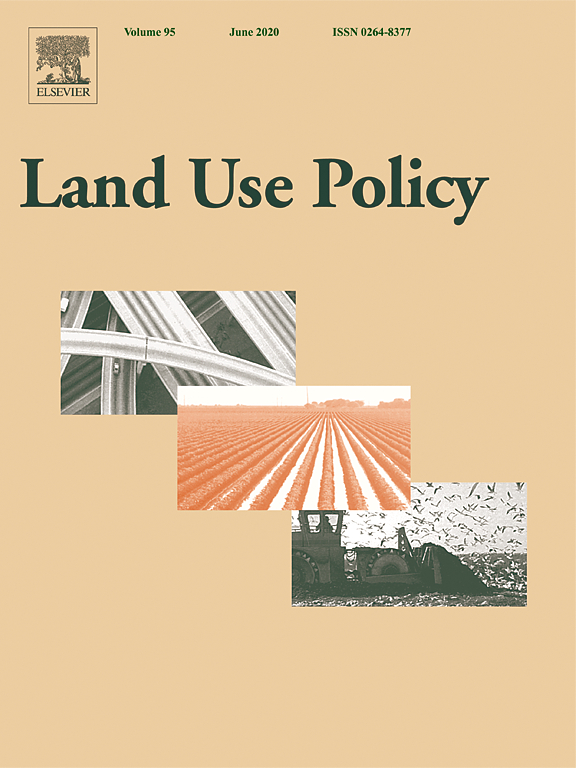Location
Land Use Policy is an international and interdisciplinary journal concerned with the social, economic, political, legal, physical and planning aspects of urban and rural land use. It provides a forum for the exchange of ideas and information from the diverse range of disciplines and interest groups which must be combined to formulate effective land use policies. The journal examines issues in geography, agriculture, forestry, irrigation, environmental conservation, housing, urban development and transport in both developed and developing countries through major refereed articles and shorter viewpoint pieces.
Land Use Policy aims to provide policy guidance to governments and planners and it is also a valuable teaching resource.
ISSN: 0264-8377
Members:
Resources
Displaying 206 - 210 of 279Cropland expansion and grassland loss in the eastern Dakotas: New insights from a farm-level survey
The western Corn Belt region of the United States has become a hotspot for agricultural extensification and consequent land use and land cover changes. The goals of this research were to characterize geographic patterns of grassland loss resulting from cropland expansion in the eastern Dakotas, and to understand how these changes were associated with characteristics of individual farms and farm operators. We collected data on grassland conversion and other land use decisions through a mail survey of farm operators in North and South Dakota.
The Australian experience in using tenders for conservation
Over the past 15 years Australia has been trialling conservation tenders and other market based instrument approaches to generate environmental outcomes, particularly on private lands. The best known of these is the BushTender auction for vegetation protection in Victoria, begun in the early 2000s. Subsequently, nearly 100 other tenders for biodiversity protection have been run in Australia with substantial variations in application and methodology generated by a mix of both intended design and case study differences.
Have integrated landscape approaches reconciled societal and environmental issues in the tropics?
Landscape approaches to integrated land management have recently gained considerable attention in the scientific literature and international fora. The approach is gaining increasing support at governmental and intergovernmental levels, as well as being embraced by a host of international research and development agencies. In an attempt to determine whether, and how, these approaches compare with previous conservation and development paradigms, we reviewed the implementation of integrated landscape approaches across the tropics.
The US Conservation Reserve Program: The evolution of an enrollment mechanism
The United States Department of Agriculture’s Conservation Reserve Program (CRP) has evolved from near open enrollment, to competitive enrollment, and now to a mixture of competitive and targeted enrollment. This paper reviews the history of the CRP and the evolution of its enrollment mechanism. I discuss the use of bid caps and the Environmental Benefits Index bid ranking mechanism in the “general” CRP; and the use of highly targeted, but non-competitive, “continuous” CRP.
New knowledge networks of small-scale farmers in Europe’s periphery
In this paper we assess the types of knowledge networks utilised by small-scale farmers in four case studies (located in Bulgaria, Poland, Portugal, and the United Kingdom). We focus on knowledge acquired to inform three new activities being undertaken by study participants: agricultural production, subsidy access and regulatory compliance, and farm diversification (specifically agritourism).



